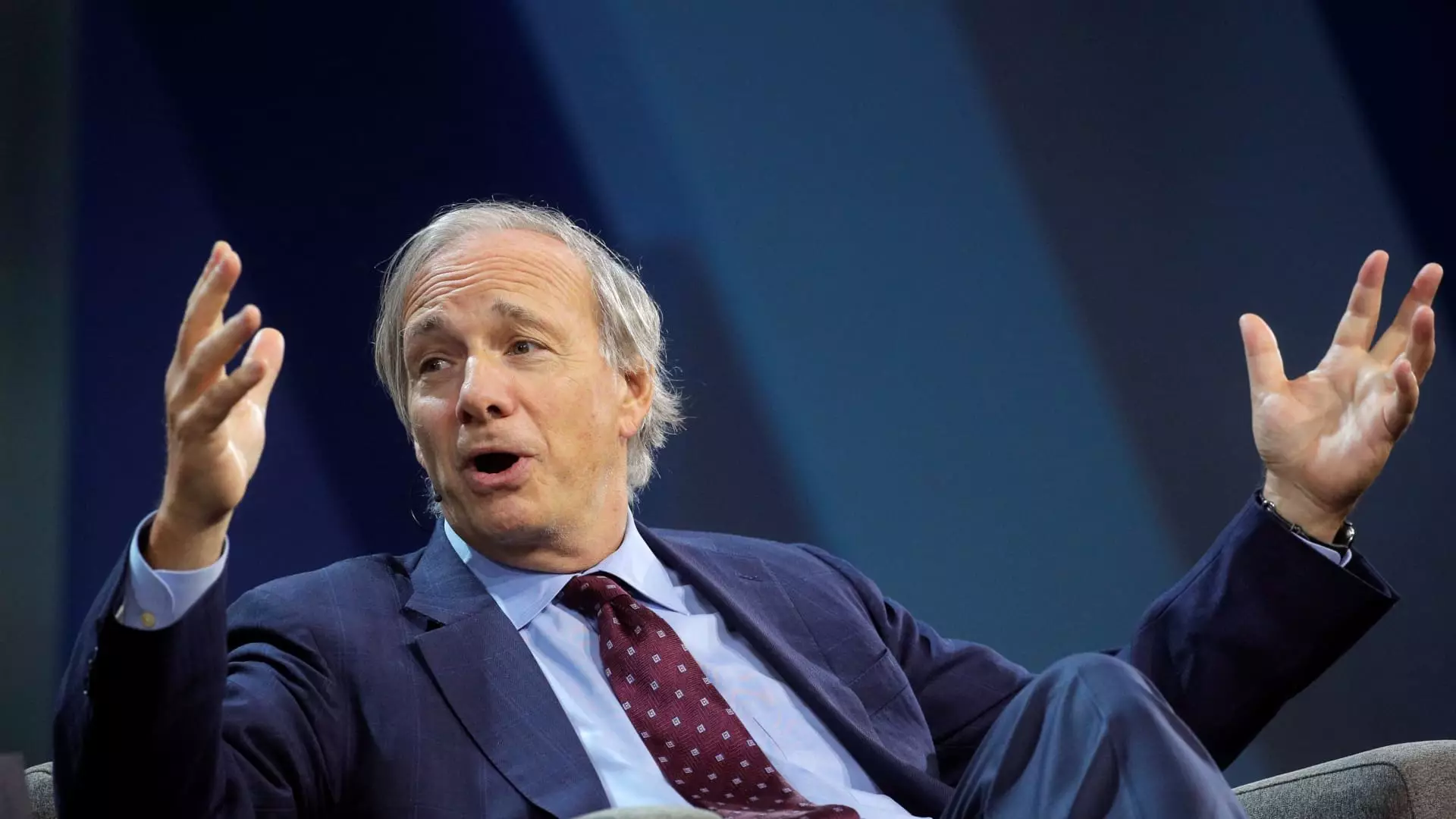The U.S. economy is navigating treacherous waters marked by unprecedented levels of debt, even as the Federal Reserve has recently taken steps to stimulate growth through interest rate cuts. Billionaire investor Ray Dalio warns that this growing liability poses significant risks not only to financial institutions but also to consumers and the broader economy. With the central bank’s recent decision to lower the federal funds rate by 50 basis points, moving to a range of 4.75% to 5%, it’s crucial to analyze what this means in the context of America’s debt landscape.
The Federal Reserve’s interest rate decisions directly influence a multitude of economic activities. A lower borrowing cost can encourage both consumer spending and business investments. However, as Dalio aptly points out, the cut is a double-edged sword. Keeping rates low may support economic growth in the short term but could exacerbate debt burdens, particularly for consumers and the government, which has been collectively amassing an unsustainable level of debt. Therefore, the delicate balancing act of the Fed is to maintain a level of interest that doesn’t overly favor creditors while also alleviating the burdens on debtors.
With the U.S. government’s national debt surpassing $35 trillion, the Treasury Department recently revealed its staggering expenditures on interest payments alone have crossed the $1 trillion mark this year. This scenario underscores the precarious balance between stimulating the economy and managing a growing deficit, which has reached nearly $2 trillion this year.
Ray Dalio identifies debt, liquidity, and market cycles as pivotal forces driving global economic conditions. He expresses concern over the sheer magnitude of debt being orchestrated by governments, particularly amplified during the Covid-19 pandemic. Governments worldwide engaged in extensive borrowing to fund stimulus efforts aimed at sustaining economies during lockdowns. This trend has raised fundamental questions about debt sustainability as countries navigate recovery.
Dalio’s perspective suggests that the response to debt and its implications varies significantly based on monetary systems in place. He contrasts the U.S. situation with that of Japan, which has maintained low interest rates over the years, effectively depreciating its currency and bonds’ value. He warns that the U.S. is potentially on a similar trajectory, where continued monetization of debt could lead to adverse currency devaluation and diminished bond values for American investors, reminiscent of Japan’s financial struggles.
The political landscape further complicates matters, especially concerning future policies surrounding fiscal responsibility. Dalio expresses skepticism that current political leadership, regardless of who ascends to power, will prioritize sustainable debt levels. This sentiment drives the concern that as debt rolls over and new obligations build, the path for managing this liability will veer toward further debt monetization.
Dalio indicates that the political will to confront growing debt head-on will likely remain absent, effectively enhancing pressures on the economic cycle. His predictions illustrate a scenario where inflationary policies become more prevalent, potentially leading to another period akin to the economic turbulence experienced in the 1970s.
The inherent risks of a highly leveraged economy raise alarms about a potential credit event, especially when traditional buyers of debt diminish. In an environment where there are few willing participants to absorb government debt, the Fed may have to intervene, leading to more profound systemic issues. Dalio warns that such actions would not only reflect a breakdown in market mechanisms but could catalyze inflationary pressures that could undermine trust in fiat currencies.
To summarize, the increasing complexity of managing national debt amidst fluctuating interest rates presents a formidable challenge for policymakers. While short-term financial maneuvers such as interest rate cuts may appear beneficial, the compounding nature of national and consumer debt raises critical questions about long-term sustainability. The insights of Ray Dalio serve as a sobering reminder of the intricate tapestry of economic forces at play, where the repercussions of debt strategy will unfold potentially into broader financial instability should the balance tilt too far. Moving forward, stakeholders must be acutely aware that the financial landscape is precariously balanced, demanding careful navigation to avert a crisis driven by debt overload.

Leave a Reply